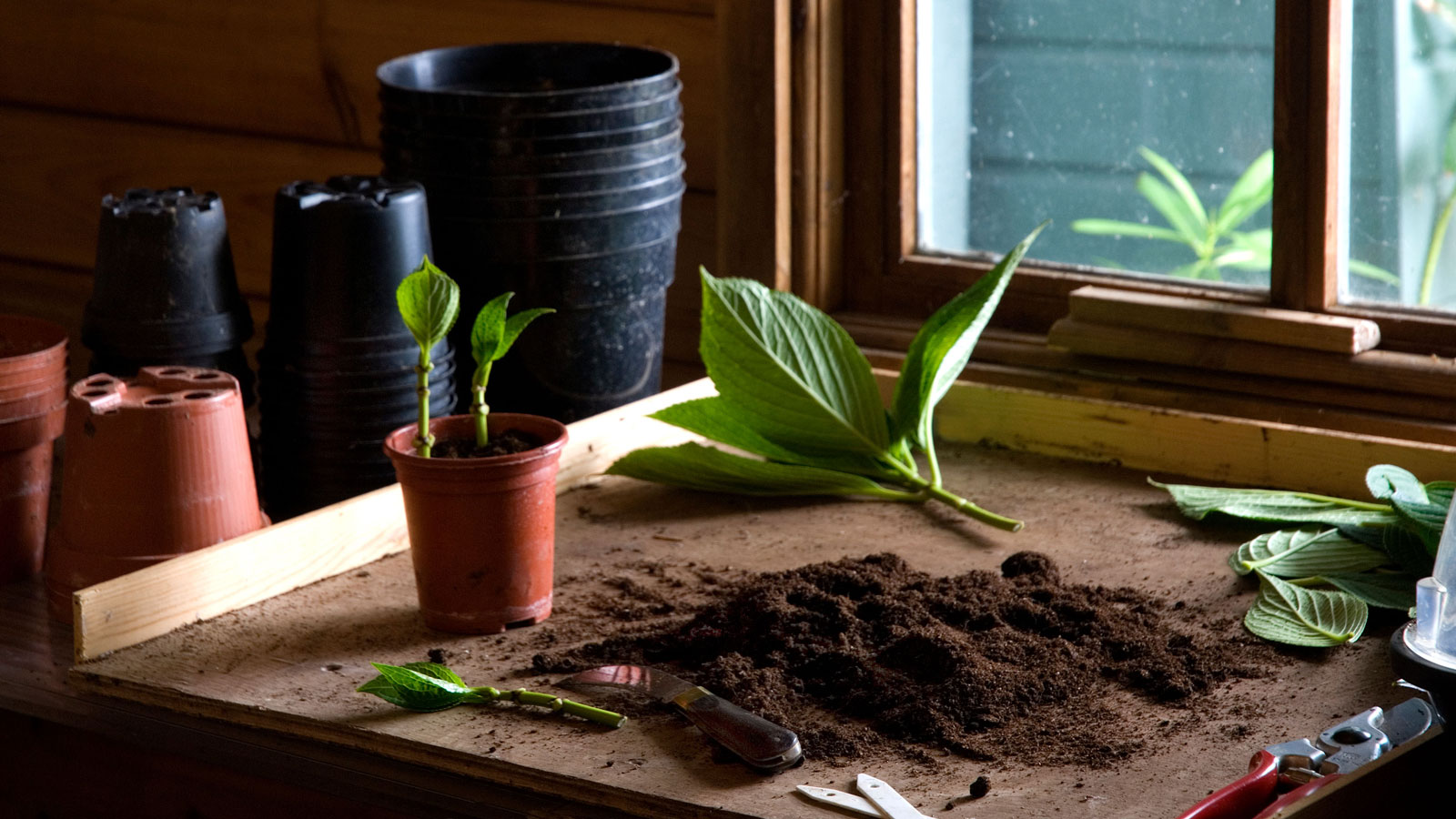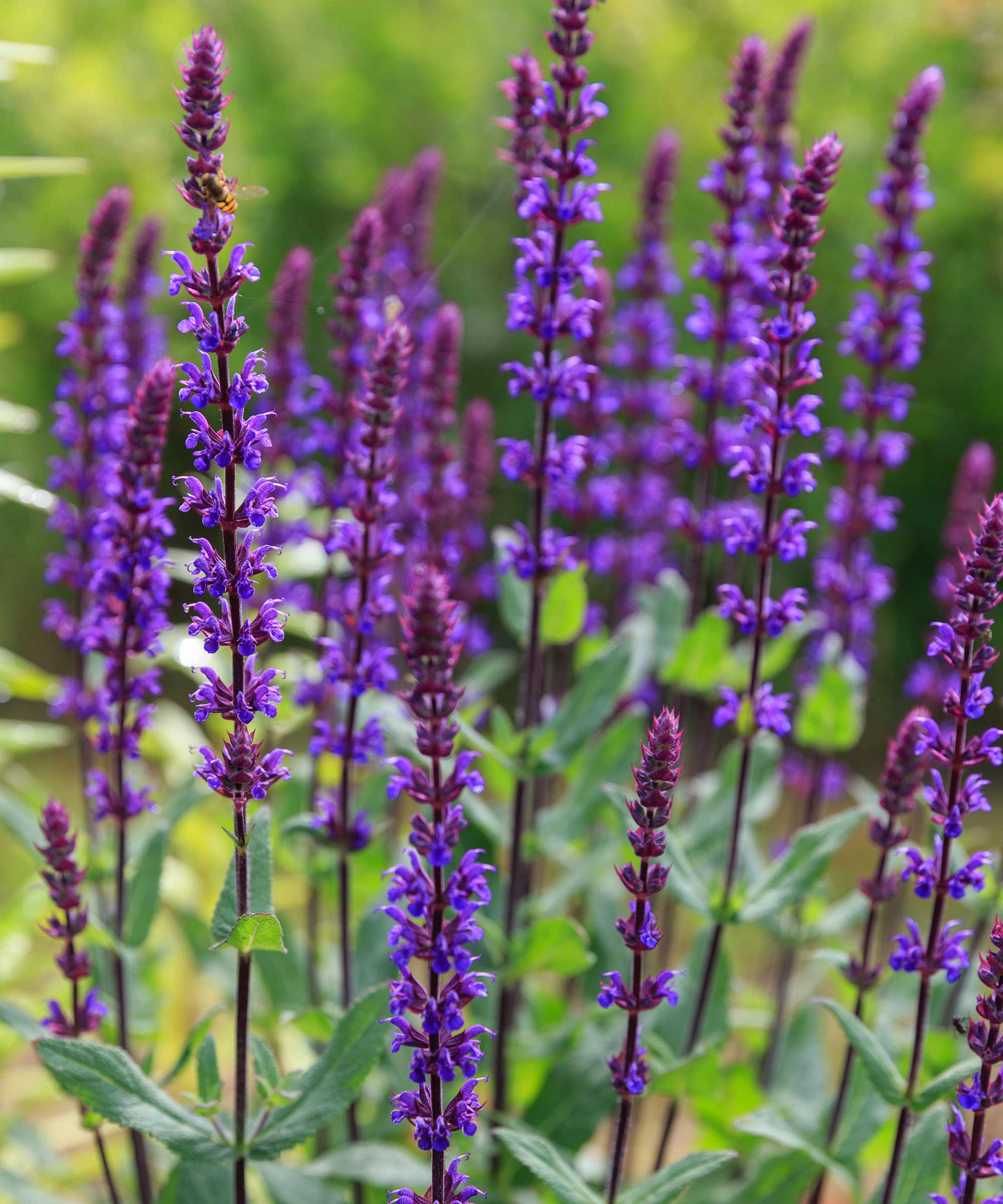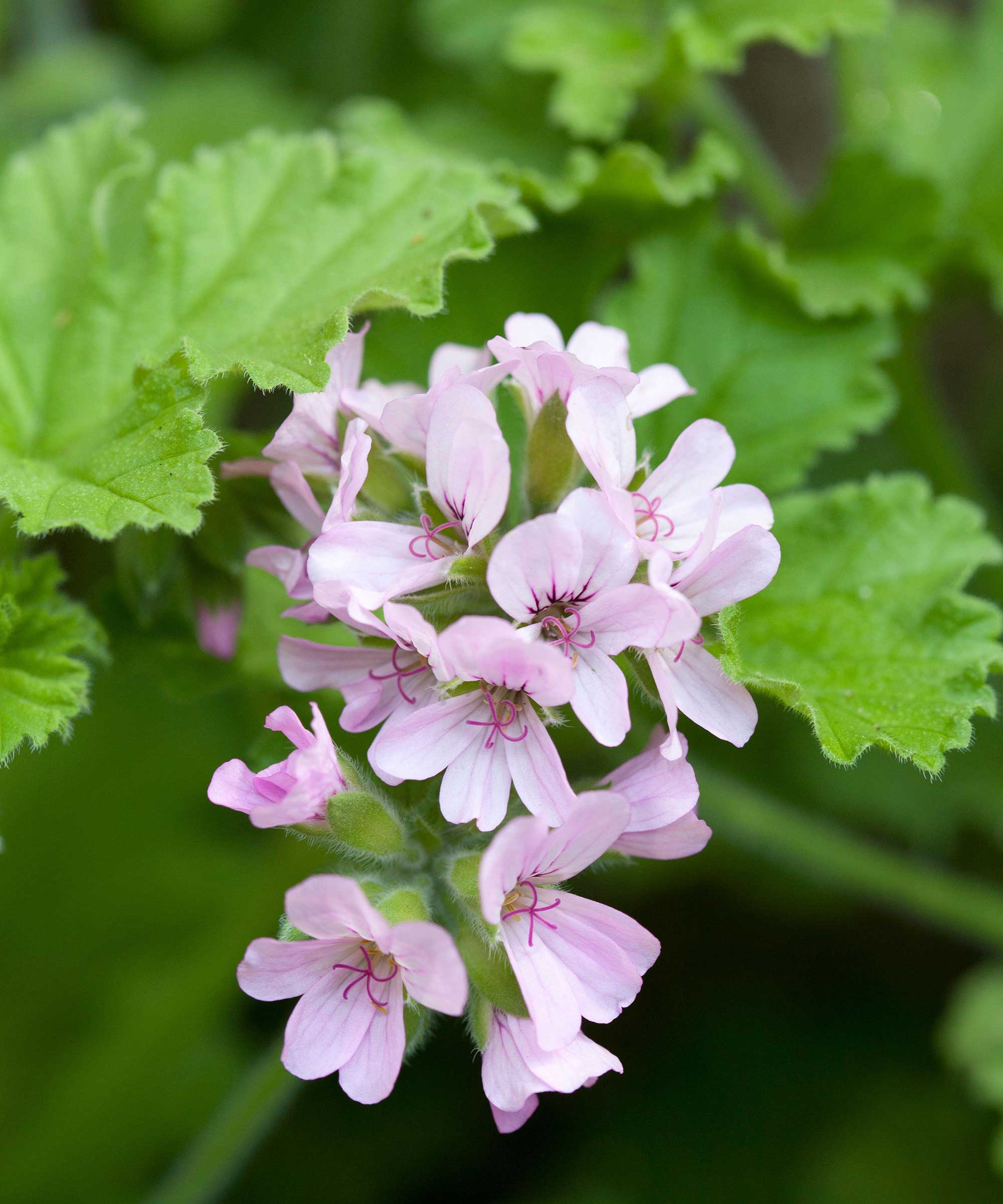8 of the best plants to take cuttings from right now – for healthier plants and even more blooms
Our selection of varieties to propagate in fall is guaranteed to multiply your plant collection fast


Taking cuttings is a good way to keep your plants going from year to year. It's so easy to do and if you become good at it is a great way of adding more of your favorite plants to fill out your collection. The good news is lots of beautiful flowers like fuchsias, pelargoniums and hydrangeas are all easy wins when it comes to taking cuttings successfully.
Now is a good time to take cuttings too. In late summer and early fall hormone levels in plants are high so the cuttings will root and grow well. You're out in the yard anyway on a tidying mission, so it's perfect timing to start snipping from plants that do well for you, and that you would like more of to fill out your flower bed ideas next year.
With this in mind, we've chosen eight of the best plants to take cuttings from right now. As soon as you’ve snipped your cuttings, put them in a polythene bag to conserve moisture and stop them drying out too fast. Then get your cuttings potted as soon as you can by following our easy guide on what to do next.

Rooting pelargonium cuttings is so easy to do
8 plants to take cuttings from in fall
There is a wide range of different methods for taking cuttings, depending on the plant and time of year.
Always pick a healthy looking plant to take the cuttings from. Remember that flowering stems don't make great cuttings, and void anything that has wilting foliage. Instead opt for a plant that has lots of new growth then have a look at our general guide on how to take plant cuttings before switching to the individual types of plant we're focusing on here.
1. Fuchsia

Easy-to-grow fuchsias thrive in containers and will bloom right into fall. They are grown as a perennial in zones 7 to 10 but this doesn't work for everyone and it can be an expensive option picking enough up at the garden center to fill all your pots every summer. So it's a good idea to multiply your plants now.
The best time of year to take fuchsia cuttings is September or October. Cuttings are best taken from the tips of a shoot with at least three pairs of leaves. Make a clean cut with a sharp knife or scissors, then remove the bottom pair of leaves. Pop them in a plastic bag as you go round the garden to keep them hydrated.
Design expertise in your inbox – from inspiring decorating ideas and beautiful celebrity homes to practical gardening advice and shopping round-ups.
The best way to root the cuttings is to grow them in pots of compost. Make up a 50/50 mix of peat and sharp sand or perlite. Fill several 3in sized pots with the mixture and insert five cuttings around the edge of each pot, using a pencil to make the planting holes. Make sure the bottom pair of leaves are just above the surface of the compost.
Water the pots, and label them. I often add the cultivar name too, so you can keep a record of which ones do really well for future reference. Put a clear plastic bag over each pot to create a mini-greenhouse or 'humidity dome'. Put in a warm place, keep moist and protect from strong sunlight. Roots should develop and the tops start to grow after a couple of weeks.
Transfer the cuttings to individual 3in pots filled with standard potting compost, then make sure you are up to speed on how to care for fuchsias to get the best out of your new plants.
2. Salvia

Easy salvias are a great addition to any flower bed, blooming from late spring long into fall in zones 4-10. But many are tender so it's a good idea to take cuttings in September or October as an insurance policy. I love the dark inky-purple flowers of Salvia 'Nachtvlinder', but it dies every year in my garden so I propagate lots of cuttings in fall to duplicate this beauty without having to go back to the plant nursery.
For the best chance of success take cuttings early in the morning when the plants are most hydrated. Select a healthy stem that isn't flowering as these are more likely to root successfully. This might require you hunting around a fair bit if yours are still flowering prolifically. Use a sharp knife to cut several stems that are about 2-3 inches long. Remove and discard the lower leaves, and trim each cutting just below a node (where the leaves appear).
Insert five or six cuttings into a 6in pot of gritty compost that is a good mix of soil and perlite or horticultural sand. Be careful not to damage the soft stems as you insert them. Cover the pot with a clear plastic bag, and keep at room temperature until rooted, which is usually around three weeks. Then the cuttings will be ready to pot on. You will need to overwinter them in a frost-free place.
3. Butterfly bush (buddleia)

With their spectacular spikes of color, butterfly bushes are a must for biodiverse gardens and are hardy in zones 5-10. You can propagate semi-hardwood cuttings in September (as well as in the summer), and the good news is they are super easy to grow and root readily.
On several occasions I have pruned my butterfly bush and stuck a random cutting in a flower pot and it's survived being ignored all winter, turning into a sturdy little plant for next summer. It's that easy.
Find a stem from this year’s growth that is green and turning gray-brown along its lower part, and has no flowers. Snip off with sharp scissors of pruning shears just below a node and trim the cutting to about 4in long. Remove all leaves apart from the top three.
Fill a pot with compost - butterfly bush cuttings aren't fussy. Use a pencil to make a hole in the soil, and insert one-third of the cutting stem into the hole and water well. Push canes around the edges of the pot, then put a polythene bag over to create the humid conditions needed for the cutting to germinate.
Position near a window or in a shaded spot outdoors. Keep the compost damp and your efforts will soon be rewarded with a new butterfly bush.
4. Pelargonium (geranium)

These easy to grow flowers are the stars of summer containers, and are so easy to grow as a perennial in zones 9-11. You can take pelargonium cuttings any time the plant is actively growing. You may want to do this in summer so you can get new plants started in pots outdoors.
Alternatively you can also take cuttings in fall and grow them indoors during winter when you have plenty more time to nurture them. I like filling a windowsill with pots of cuttings and they do occasionally bloom before being transferred out into the yard in spring.
After a few weeks somewhere warm and light, with their compost kept just damp, your cuttings will soon start to grow. This means they are developing roots and will soon turn into young plants. Keep your tender new pelargonium plants somewhere frost-free over winter. A heated greenhouse, porch or cool room are all ideal as long as they have good light levels to keep your cuttings healthy.
5. Hydrangea

No article on taking cuttings is complete without a mention of how to propagate hydrangeas. These beauties are generally hardy in zones 3-9, with some species more cold-hardy than others, while others prefer warmer climates.
My garden is filled with these gorgeous plants after I found out how easy it was to multiply my existing bushes. I like to take cuttings in fall, when I have more time to tend them but the truth is I've found I can take cuttings at pretty much any time of year and they all do really well.
Generally, it's best to take hydrangea cuttings in late summer to mid fall from the current season's growth. Maybe I'm lucky because I'm already growing some of the best hydrangea varieties or because my backyard is very sheltered. Either way I've never used rooting hormone for hydrangea cuttings nor needed the 'humidity dome' method where you use a plastic bag.
For a different approach I am going to try growing hydrangea cuttings in water this fall. You simply snip your cutting stems in the usual way and keep them in clear jars of water on a windowsill. Change the water regularly and in three to four weeks you should start to see wonderful thick white root systems on your cuttings that are more than ready to go into potting soil.
This is a great way to go as you can monitor the root development and don't have to worry about how your cuttings are doing once they're potted up in soil as you know they were healthy when they went in.
6. Beardtongue (penstemon)

These long-blooming summer flower bed delights will often seed in the garden if they are happy in their location (they thrive in zones 4-8) but if you don't want to leave it to chance it's best to pot up plenty of cuttings.
You can take semi-ripe cuttings in summer right through to mid-fall. All this means is that you are taking cuttings from this season's growth on an existing plant. Choose healthy looking shoots that are 2-4in long and you'll find these are super easy to grow.
Use sharp pruning shears or scissors and cut just below a leaf joint, about 4in from the tip of your shoot. Then, strip off the lower leaves. Fill pots with multi-purpose compost, and push the cuttings into the soil around the edges. Water well, label with the name of the cultivar, and create a humid environment such as that provided by putting a clear plastic bag over the top.
7. Verbena

Graceful verbena plants add drifts of color and texture to flower bed planting schemes and they are a great choice if you're interested in drought-tolerant planting ideas. These short-lived flowers can be perennial (zones 7-9) or annual depending on your climate. They can also be propagated easily and successfully from cuttings.
October is the ideal time to take verbena cuttings to add to your stocks. Then you will need to overwinter them in a frost-free place to guarantee a supply of new verbena plants next year to replace any in the garden that don't survive winter.
Late summer and early fall cuttings are tougher and more likely to survive, but they root quite slowly. You can also take cuttings in late spring, when you might see quicker results.
Your cuttings will each need to be about 3in long and non-flowering. Remove all but the top one or two sets of leaves. Stick the cuttings in small pots of gritty compost. Keep the soil moist by covering the whole pot in a plastic bag. After six weeks or so, the cutting will start to form roots.
8. Japanese anemone

Tall and graceful Japanese anemones add beautiful punctation marks to late summer and fall flower beds, and thrive in zones 5-8. One easy way to propagate them is to divide clumps in early spring or fall.
When dividing plants in fall, you can also take root cuttings. You will notice from the root ball that the roots have lots of nodules and the good news is that each one is capable of growing new shoots which you can turn into extra plants. Find out how to propagate Japanese anemones as this method is slightly different as you take cuttings from the root not the leaves.
My absolute favorite is the cultivar 'Honorine Jobert', which is best planted in partial shade, and lights up the dark corner at the bottom of my garden. I will definitely be trying the root cutting method this fall.
FAQs
When should I take lavender cuttings?
The best time to propagate lavender is spring or early summer. Lavender is a staple of the summer garden, and if you have enough plants you can add drifts of pretty scented flowers and foliage to run through your flower beds.
The good news is that lavender is a great one for beginners looking for the best plants to take cuttings from as they root so easily. But you will have to wait till next year to try this out.
Do I need to use rooting hormone?
Rooting powders contain synthetic hormones that mimic the natural hormones found in plants. This can boost growth and speed up the development of your cutting. They also include chemicals that lessen the risk of your cuttings becoming diseased, which should increase your success rate.
Many gardeners think rooting powders are unnecessary, but it can be a good thing to use if you're taking cuttings of more difficult plants. Fill a container with water and put some rooting hormone into a second container. Dip the end of the cutting into the water then into the rooting hormone, and tap off any excess powder before planting your cutting.
You can also try cinnamon powder or honey instead of hormone rooting powder, which are also thought to stimulate growth and encourage the stem to produce more roots, while helping to prevent disease.

If you're inspired by our ideas for the best plants to take cuttings from right now, find out how to propagate herbs from cuttings too, as late summer and early fall are the idea time to get more plants.

Lifestyle journalist Sarah Wilson writes about garden design and landscaping trends for Homes & Gardens. She has studied introductory garden and landscape design, and also has an RHS Level 2 qualification in the Principles of Plant Growth and Development. She is a regular contributor to Homes & Gardens and Livingetc. She has also written for Country Living, Country Homes & Interiors, and Modern Gardens magazines